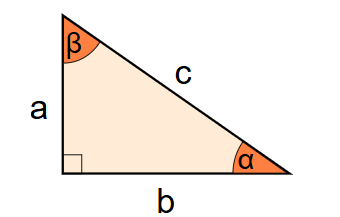1. What is a Pythagorean Theorem Calculator?
Definition: This calculator uses the Pythagorean theorem to compute the hypotenuse, area, and perimeter of a right triangle given the lengths of its two legs.
Purpose: It is used in geometry to determine properties of right triangles, useful in education, construction, and engineering.
2. How Does the Calculator Work?
The calculator takes the legs \( a \) and \( b \) as inputs and computes the following:
- Hypotenuse \( c \): \( c = \sqrt{a^2 + b^2} \)
- Area: \( \text{Area} = \frac{1}{2} \times a \times b \)
- Perimeter: \( \text{Perimeter} = a + b + c \)
Unit Conversions:
- Input Dimensions: m, cm (1 m = 100 cm), mm (1 m = 1000 mm), in (1 m = 39.3701 in), ft (1 m = 3.28084 ft), yd (1 m = 1.09361 yd)
- Output Area: m², cm² (1 m² = 10000 cm²), mm² (1 m² = 1000000 mm²), in² (1 m² = 1550.0031 in²), ft² (1 m² = 10.7639 ft²), yd² (1 m² = 1.19599 yd²)
- Output Dimensions: m, cm, mm, in, ft, yd
Steps:
- Input the legs \( a \) and \( b \) with their units.
- Convert all dimensions to meters for calculation.
- Validate the inputs (e.g., positive values).
- Calculate the outputs using the formulas, formatted to 4 decimal places.
3. Importance of Pythagorean Theorem Calculations
Calculating properties of a right triangle is crucial for:
- Geometry Education: Understanding the Pythagorean theorem and its applications.
- Engineering Design: Analyzing structural components involving right angles.
- Construction: Ensuring accurate measurements for diagonal lengths.
4. Using the Calculator
Examples:
- Example 1: For a triangle with \( a = 3 \, \text{cm} \), \( b = 4 \, \text{cm} \):
- Convert: \( a = 0.03 \, \text{m} \), \( b = 0.04 \, \text{m} \)
- Hypotenuse \( c \): \( c = \sqrt{0.03^2 + 0.04^2} = 0.05 \, \text{m} \)
- Area: \( \text{Area} = \frac{1}{2} \times 0.03 \times 0.04 = 0.0006 \, \text{m}^2 \)
- Perimeter: \( \text{Perimeter} = 0.03 + 0.04 + 0.05 = 0.12 \, \text{m} \)
- Convert: \( c = 5 \, \text{cm} \), \( \text{Area} = 6 \, \text{cm}^2 \), \( \text{Perimeter} = 12 \, \text{cm} \)
- Example 2: For a triangle with \( a = 5 \, \text{in} \), \( b = 12 \, \text{in} \):
- Convert: \( a = 0.127 \, \text{m} \), \( b = 0.3048 \, \text{m} \)
- Hypotenuse \( c \): \( c = \sqrt{0.127^2 + 0.3048^2} \approx 0.3302 \, \text{m} \)
- Area: \( \text{Area} = \frac{1}{2} \times 0.127 \times 0.3048 \approx 0.0194 \, \text{m}^2 \)
- Perimeter: \( \text{Perimeter} = 0.127 + 0.3048 + 0.3302 \approx 0.762 \, \text{m} \)
- Convert: \( c = 13 \, \text{in} \), \( \text{Area} = 30 \, \text{in}^2 \), \( \text{Perimeter} = 30 \, \text{in} \)
5. Frequently Asked Questions (FAQ)
Q: What is the Pythagorean theorem?
A: The Pythagorean theorem states that in a right triangle, the square of the hypotenuse (\( c \)) is equal to the sum of the squares of the other two sides (\( a \) and \( b \)): \( c^2 = a^2 + b^2 \).
Q: Why is the Pythagorean theorem important?
A: It is fundamental for solving problems involving right triangles in geometry, engineering, and physics.
Pythagorean Theorem Calculator© - All Rights Reserved 2025
 Home
Home
 Back
Back
